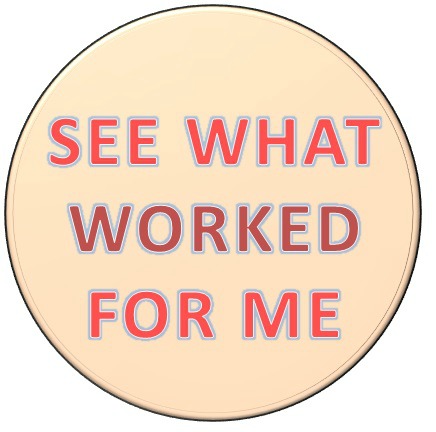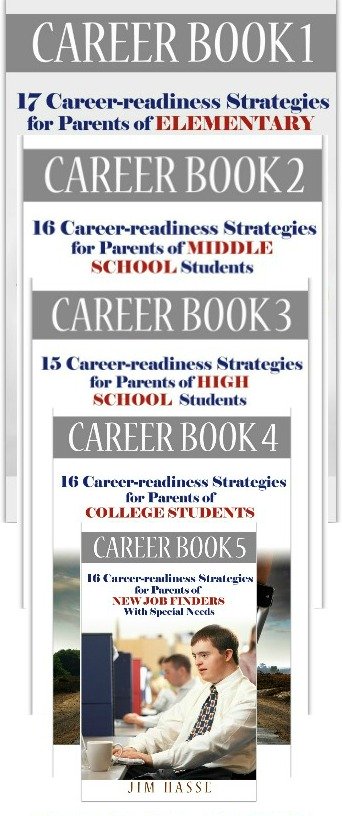Keep Up the Good Work:
Success on the Job with Cerebral Palsy
By Jim Hasse, ABC, GCDF, Disability Employment Expert
_________________________________________________________
Here's how to keep up the good work in seven personal-experience stories about the success I had in competitive employment as a person with cerebral palsy (CP).
Download Little Book 6 now.
How I became a vice president in the Fortune 500
You need to read this eBook of transformation stories. It shows what worked for me as I assumed more senior responsibilities in my job -- even though I walked and talked with difficulty due to cerebral palsy. In this quick read (about 40 minutes), you get:
- Expert advice
- Potential pathways
- Mainstream orientation
Now is the time to help your new job finder with CP learn the lessons of how to do well once on the job.
The steps you take now will help your youngster build a meaningful career.
Transformation stories for mentoring new job finders
Below are seven transformation stories about my own experiences in learning how to do well at work.
In Little Book 6, you'll discover this: What success I’ve had in the workplace is because of my disability (not in spite of it).
Together, my seven learning experiences gave me a competitive edge in moving from a minimum-wage, beginner job to an executive position.
During the 1980s, I didn’t have an opportunity to tell my mom about those experiences.
These are transformation stories which now, decades later, may help you mentor your own youngster.
Story 1 - “No ‘Rotten Job’”
Story 2 – “Unnaturally Frozen in Time”
Story 3 – “Wheels Instead of Feet”
Story 4 – “Risky Business”
Story 5 – “Go to Plan ‘B’”
Story 6 – “Triple-win Opportunity”
Story 7 – “Risky, Messy But Innovative”
Series of Little Books: Get all 7
There are actually seven quick career-insight Little Books for parents of youngsters with CP
Each of the seven Little Books takes about 40 minutes to read.
Each illustrates and summarizes the essential career builders for your youngster’s age group – all through seven transformation stories about my personal experience as a person with CP.
Get all seven Little Books now.
Excerpt from Story 1
If they would have known, my college classmates would have said that, after graduation in 1965, I ended up working in the “armpit of Wisconsin,” a crossroads with a total population of 187 people who supported three bars and two churches.
But, my story about how I became a vice president for a Fortune 500 company in the 1980s is essentially a narrative about the three attributes I discovered among my coworkers in that tiny town: acceptance, patience and inclusion.
Those characteristics were not mandated by law. After all, the Americans with Disabilities Act (ADA) didn’t become law until 1990. But, three decades ago, in the rural Midwest, those values were not uncommon.
In my case, I started working in my first job out of college for a local dairy cooperative. It was 1965. I had grown up on a dairy farm, worked on 4-H projects, went to a small high school and attended church on Sunday mornings. Most of my coworkers had a similar background.
In 1965, what made me different from my coworkers is that I had a college education and I had CP.
Yes, I stuck out as unusual, but that didn’t seem to matter much because I was a “farm boy,” the general manager of the cooperative (Floyd) knew my family as neighbors, my uncle (Dean) was the cooperative’s chief engineer and my boss (Bob) had gone to college with a classmate who also had CP.
Download Little Book 6 now.
Return from Keep Up the Good Work to Job Finder
Go to Cerebral Palsy Career Builders
This is Creative Commons content. You can freely and legally use, share and repurpose it for non-commercial purposes only, provided you attach this sentence and the following attribution to it (including the two links):
Originally written and illustrated by Jim Hasse, ABC, GCDF, owner of Hasse Communication Counseling, LLC, who, as a person with cerebral palsy, served for 10 years as a vice president in a Fortune 500 company during his 29-year career in corporate communication. He’s an Accredited Business Communicator, certified as a Global Career Development Facilitator and author of 14 Amazon books about disability awareness and disability employment issues.







